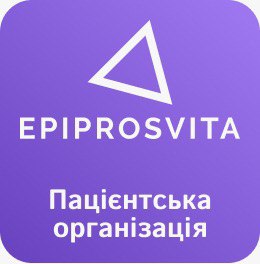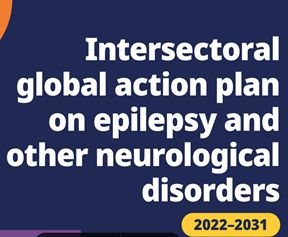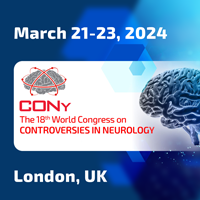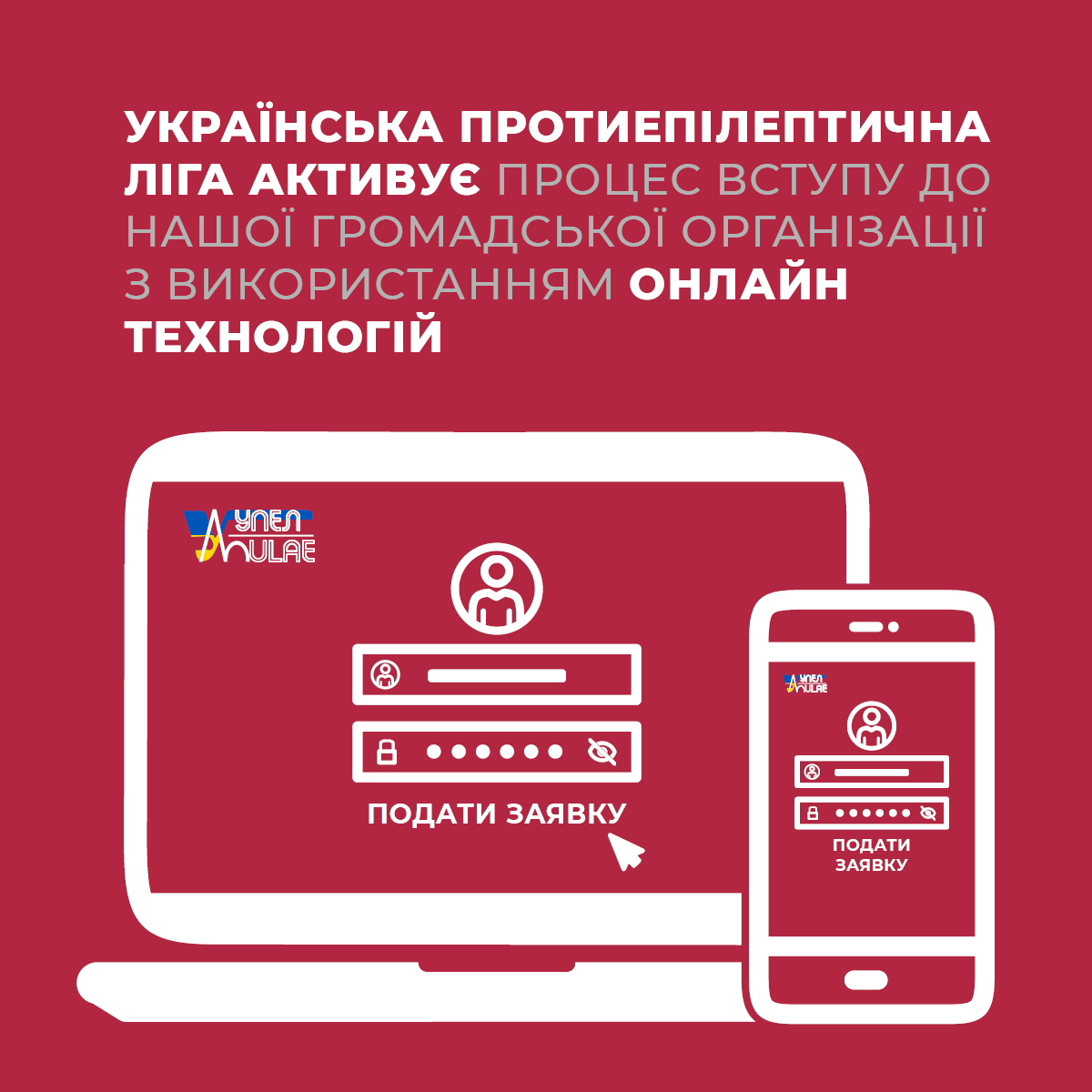Seizure 2020, Том 77, Вибір редактора: «Когнітивні функції у дітей з епілепсією, в залежності від віку та різновиду оперативного втручання: Моноцентричне однорічне дослідження у 306 пацієнтів шкільного віку».
Може здатися абсолютно недоречним з урахуванням нинішнього життєвої ситуації і настроїв випускати спеціальний випуск з хірургії дитячої епілепсії в той час, як ми стоїмо перед кризою, яка цілком може стати найбільшою гострою глобальною проблемою з часів Другої світової війни. У той час як міські вулиці спорожніли, суспільство мусить запроваджувати все більш жорсткі заходи "соціального дистанціювання" та "самоізоляції", а лікарні з великими труднощами справляються з потоком гострих хворих пацієнтів, які госпіталізуються: навіщо публікувати статті про надзвичайно складні втручання, що показані менш ніж для 5% всіх людей з епілепсією – та доступні тільки тим, хто живе в багатих країнах? - А чому саме у цей час?
Я постараюся відповісти на ці питання, але спочатку я хотів би заздалегідь вибачитися, якщо мої відповіді здаватимуться до смішного недоречними до того часу, коли вони будуть прочитані. Подібно автовиробникам, яким було запропоновано перейти на виробництво апаратів штучної вентиляції легень, я і мої колеги провели більшу частину минулого тижня, трансформуючи багатопрофільну третинну клінічну неврологічну службу, що надає широкий спектр медичних, хірургічних, імунологічних, дієтичних, реабілітаційних та психотерапевтичних послуг в амбулаторних умовах, в службу підтримки для лікування гострих респіраторних захворювань, інтенсивної терапії та інтенсивного догляду. Вся неургентна планова нейрохірургія (включаючи епілепсію) була припинена. Більшість операційних та хірургічних відділень перетворюються у відділення інтенсивної терапії. Багато амбулаторних консультацій скасовуються або відкладаються, і всі особисті амбулаторні контакти замінюються телефонним або відеозв’язком. Однак розклади чергувань укомплектування персоналом надзвичайної ситуації, які ми обговорили тільки вчора, вже застаріли. І сценарії, які ми собі уявляли, коли будували наші плани минулого тижня, вже здаються дивно наївними. Тепер ми припускаємо, що нам знадобиться щонайменше вдвічі більше неврологів для надання невідкладної медичної допомоги та забезпечення можливості домашнього лікування неврологічних ургентних ситуацій, ніж вважалося необхідним всього за 24 години до цього. Тому я гостро усвідомлюю, що все, що я пишу сьогодні, оскільки все більше людей і медичних працівників у всьому світі стають прямими або опосередкованими жертвами Covid-19.
З урахуванням цих застережень дозвольте мені спробувати відповісти на поставлені вище питання: життя буде продовжуватися і після пандемії Covid-19. У той час як багато хто з нас буде думати про своє життя як про розділену на дві окремі частини – до і після пандемії, – сучасний світ не закінчиться. Люди продовжуватимуть страждати від хронічних станів, таких як епілепсія. Ми як і раніше будемо прагнути забезпечити ефективне лікування і знизити тягар цієї хвороби. - І у випадку хірургії дитячої епілепсії ми можемо піти набагато далі. Саме цей спосіб лікування в багатьох випадках залишається нашим єдиним успішного лікування епілепсії. Навіть більшою мірою, ніж хірургія епілепсії у дорослих, це лікування має не лише потенціал, який допоможе пацієнтам у короткий термін, але може глибоко змінити життєві траєкторії наших пацієнтів. Навіть якщо дефіцит фінансування, матеріалів або персоналу повинен змусити обмежувати перенапружені медичні послуги після пандемії: з цього приводу відновленню хірургії дитячої епілепсії слід віддавати перевагу перед іншими виборчими нейрохірургічними процедурами.
Мій редакційний вибір з поточного спеціального випуску журналу «Seizure» - відредактований Jun Park - оригінальний дослідницький матеріал Christoph Helmstaedter et al. під назвою «Когнітивні функції у дітей з епілепсією, в залежності від віку та різновиду оперативного втручання: Моноцентричне однорічне дослідження у 306 пацієнтів шкільного віку»(1). Ця стаття нагадує, що епілепсія – це не просто захворювання, яке характеризується повторюваними нападами. У більшості випадків епілепсія також пов'язана з певним ступенем когнітивного дефіциту. Як показали дослідження традиційних і нових протиепілептичних препаратів (SANAD), навіть в момент постановки діагнозу (тобто до початку лікування з потенційними когнітивними побічними ефектами і не поясненою кількістю нападів, типом епілепсії або настроєм) пацієнти з епілепсією гірше, ніж здорові добровольці, справляються з цілим рядом когнітивних тестів, особливо пов’язаних з пам'яттю і психомоторною швидкістю: у цьому дослідженні приймали участь 53,5% пацієнтів, але тільки 20,7% хворих набрали >2 стандартних відхилень нижче контрольного середнього рівня, принаймні в одній області тестування (2). Ці когнітивні дефіцити навіть важливіші у дітей, ніж у дорослих, тому що вони можуть вплинути на подальший когнітивний розвиток (3). Зважаючи на набагато кращу здатність молодого мозку до відновлення після операції хворих на епілепсію, успішні оперативні втручання у дітей та підлітків часто значно покращують когнітивні показники, тоді як еквівалентні покращення у пацієнтів старшого віку зустрічаються значно рідше, навіть коли напади припиняються після операції (4).
У статті, що є «Вибором редактора» Helmstaedter et al.(1) описана велика серія хірургічних втручань у дітей та підлітків з епілепсією. У 85% пацієнтів були виявлені передопераційні когнітивні порушення, принаймні в одному домені (тобто вони виконували >2 стандартних відхилень нижче рівня здорового контролю), а у 71% були проблеми з поведінкою. У післяопераційному періоді статус 21-50% пацієнтів змінювався від порушення щонайменше в одному домені до непорушеного в усіх областях. На індивідуальному рівні пацієнтів достовірне підвищення показників тесту спостерігалося у 16-42% пацієнтів у різних областях. Частка пацієнтів, у яких після операції не було нападів, склала 81%. При останньому спостереженні пацієнти в групі хірургічного лікування з більшою ймовірністю, ніж інші, знижували своє фармакологічне навантаження АЕП на організм.
Звільнення від нападів після оперативного лікування, більш молодий вік при оцінці, більш пізній вік початку епілепсії, більш низьке фармакологічне навантаження і менший ступень пошкодження мозкової тканини були предикторами кращих когнітивних і поведінкових наслідки після операції у дітей і підлітків з епілепсією. Відповідно до висновків попередніх досліджень про те, що нейропсихологічний дефіцит має тенденцію бути менш вогнищевим/доменним у дітей, ніж у дорослих (3); локалізація і латералізація практично не впливають на нейропсихологічні результати. Точно так само стать і тип патології не мали суттєвого впливу на прогнозування післяопераційного нейропсихологічного результату (1).
Це дослідження показує, як багато хорошого ми можемо зробити за допомогою передових нейрохірургічних методів, описаних в цьому спеціальному випуску журналу «Епілепсія в дитячій хірургії». Заключна причина для публікації цього спеціального випуску в той час, як ми всі так чи інакше боремося з пандемією Covid-19, полягає в тому, щоб нагадати нам, що настане найкращий час – час, коли ми зможемо очистити себе від пилу і переорієнтуватися на забезпечення хірургічного лікування, яке може повністю змінити життя людей з епілепсією.
References:
1) Helmstaedter C, Beeres K, Elger C, Kuczaty S, Schramm J, Hoppe C. Cognitive outcome of pediatric epilepsy surgery across ages and different types of surgeries: A monocentric 1-year follow-up study in 306 patients of school age. Seizure 2020; 77: 86-92.
2) Taylor J, Kolamunnage-Dona R, Marson AG, Smith PE, Aldenkamp AP, Baker GA, et al. Patients with epilepsy: cognitively compromised before the start of antiepileptic drug treatment? Epilepsia 2010;51,48-56.
3) Holmes GL, Effect of Seizures on the Developing Brain and Cognition. Semin Pediatr Neurol 2016; 23: 120–126.
4) Helmstaedter C, Reuber M, Elger CE. Interaction of cognitive aging and memory deficits related to epilepsy surgery. Ann Neurol 2002;52,89-94.
Seizure 2020, Vol 77, Editor’s Choice: ” Cognitive outcome of pediatric epilepsy surgery across ages and different types of surgeries: A monocentric 1-year follow-up study in 306 patients of school age”
It may seem badly out of step with current lived experience and sentiment to produce a Special Issue on paediatric epilepsy surgery while we are facing a crisis, which may well become the greatest acute global challenge since the Second World War. While city streets have emptied, societies are struggling with increasingly stringent “social distancing” and “self isolation” measures, and hospitals are struggling to deal with the stream of acutely ill patients flooding through their doors: why publish articles about highly complex interventions suitable for less than 5% of all individuals with epilepsy – and only available to those who live in rich countries? – And why at this time?
I will try to address these questions, but first I would like to apologise in advance in case my answers seem ridiculously inappropriate by the time they are read. Much like the car manufacturers that have been encouraged to switch to producing ventilators, my colleagues and I have spent much of last week transforming a multidisciplinary tertiary clinical neuroscience service providing a broad range of medical, surgical, immunological, dietary, rehabilitative and psychotherapeutic in- and outpatient treatments into a support service for acute respiratory, intensity and high dependency care. All non-urgent elective neurosurgery (including epilepsy surgery) has been stopped. Most operating theatres and surgical recovery areas are being converted to intensive care units. Many outpatient appointments are being cancelled or delayed and all face-to-face outpatient contacts have been replaced with telephone or video-phone interactions. However, the emergency staffing rotas we discussed only yesterday are already out of date. And the scenarios we imagined as we made our plans last week already seem strangely naive. Now we anticipate that we will need at least twice as many neurologists to support acute medical services and to enable home treatment of neurological emergencies than was deemed necessary only 24 hours earlier. I am therefore acutely aware that anything I write today, as more people and healthcare professionals around the world become direct or indirect victims of Covid-19.
With these provisos out of the way, let me try to answer the questions posed above: Life will continue after the Covid-19 pandemic. While many of us will come to think of our lives as split into two distinct parts – before and after the pandemic – the modern world will not end. People will continue to suffer from long-term conditions such as epilepsy. We will still want to provide effective treatments and reduce the burden of the disease. – And in the case of paediatric epilepsy surgery, we can actually go much further than this. This particular treatment remains our only chance of providing a cure of epilepsy. Even more clearly than adult epilepsy surgery, this treatment does not only have the potential to help patients in the short term, but it can make a profound difference to our patients’ whole life trajectories. Even if shortages of funding, material or staffing should force restrictions upon overstretched health care services after the pandemic: for this reason the resumption of paediatric epilepsy surgery should be given priority over other elective neurosurgical procedures.
My editor’s choice from the current Special Issue of Seizure – guest edited by Jun Park – is an original research paper by Christoph Helmstaedter et al. entitled “Cognitive outcome of pediatric epilepsy surgery across ages and different types
of surgeries: A monocentric 1-year follow-up study in 306 patients of school age” (1). This paper reminds us that epilepsy is not simply a disease characterized by recurrent seizures. In most cases, epilepsy is also associated with some degree of cognitive compromise. As demonstrated in the Study of Standard and New Antiepileptic Drugs (SANAD), even at the point of diagnosis (i.e. before commencement of treatment with potential cognitive side effects, and not explained by the number of seizures, type of epilepsy or mood) patients with epilepsy perform worse than healthy volunteers on a range of cognitive measures, particularly of memory and psychomotor speed: In that study, 53.5% patients but only 20.7% of controls scored >2 standard deviations below the control mean in at least one testing domain (2). These cognitive deficits are even more important in children than in adults because they can affect subsequent cognitive development (3). In view of the much better ability of the young brain to recover after epilepsy surgery successful operative interventions in children and adolescents often improve cognitive performance substantially whereas aequivalent improvements are unexpected in older patients even when seizures stop postoperatively (4).
In my Editor’s Choice paper, the large paediatric and adolescent epilepsy surgery series described by Helmstaedter et al. (1), 85% of patients were found to have preoperative impairments in at least one domain (i.e. they performed >2 standard deviations below the level of healthy controls), and 71% had behavioral problems. Postoperatively, the status of 21-50% of the patients changed from impaired in at least one domain to unimpaired across all domains. At the individual patient level significant gains in test performance were observed in 16-42% of patients in different domains. The proportion of patients who had become seizure-free through surgery was 81%. At last follow up, patients in the surgically treated group were more likely than the others to have decreased their antiseizure medicine load.
Postoperative seizure freedom, a younger age at evaluation, a later age at epilepsy onset, a lower antiepileptic drug load, and less baseline damage predicted better cognitive and behavioral outcomes after epilepsy surgery in children and adolescents. In keeping with the finding of previous studies that neuropsychological deficits tended to be less focal / domain specific in children than adults (3); localization and lateralization had little or no impact on neuropsychological outcomes. Likewise, gender and type of pathology were not found to predict postoperative neuropsychological outcome (1).
This study shows how much good we are able to do with the advanced neurosurgical techniques described in the current Special Issue of Seizure on paediatric epilepsy surgery. The final reason for publishing this Special Issue while we are all grappling with the Covid-19 pandemic one way or another is to remind us that a better time will come – a time when we will be able to dust ourselves down and refocus on providing surgical treatments which can completely transform the lives of individuals with epilepsy.
References:
1) Helmstaedter C, Beeres K, Elger C, Kuczaty S, Schramm J, Hoppe C. Cognitive outcome of pediatric epilepsy surgery across ages and different types of surgeries: A monocentric 1-year follow-up study in 306 patients of school age. Seizure 2020; 77: 86-92.
2) Taylor J, Kolamunnage-Dona R, Marson AG, Smith PE, Aldenkamp AP, Baker GA, et al. Patients with epilepsy: cognitively compromised before the start of antiepileptic drug treatment? Epilepsia 2010;51,48-56.
3) Holmes GL, Effect of Seizures on the Developing Brain and Cognition. Semin Pediatr Neurol 2016; 23: 120–126.
4) Helmstaedter C, Reuber M, Elger CE. Interaction of cognitive aging and memory deficits related to epilepsy surgery. Ann Neurol 2002;52,89-94.
Seizure 2020, Vol 76, Editor’s Choice: “Exploring epilepsy attendance at the emergency department and interventions which may reduce unnecessary attendances: A scoping review”
At a time when the world’s attention is focused on the response of emergency medical services to the Covid-19 pandemic my Editor’s Choice from the current volume of Seizure is a scoping review by Lisa Burrows et al, summarizing research exploring interventions aimed at reducing unnecessary emergency department (ED) attendances by individuals with epilepsy (1).
In England (population 53 million) a high-income country with a universal public health system providing free access to routine and emergency health care and antiseizure medicines only 50% of patients with epilepsy become free of seizures (2). Those individuals with uncontrolled epilepsy are not the only ones who are at risk of frequenting EDs with seizures. One study suggested that, although three quarters of patients of the patients brought to an ED with a suspected seizure diagnosis had experienced and epileptic seizure only about one third of patients carried a diagnosis of epilepsy at the time of their admission (3). However it has been estimated that epileptic seizures lead to 60,000 ED (113 per 100,000), and 40,000 hospital admissions in England per year (76-148 per 100,000), making epileptic seizures one of the three commonest neurological causes for attendance in emergency departments (EDs) (4).
This means that a substantial proportion of seizure-associated ED attendances are related to an “ambulatory care sensitive condition”, i.e. they occurred in a context in which optimal ambulatory care may have prevented the need for the involvement of emergency services. Most presentations to EDs turn out to be related to problems which could have been managed outside EDs (such as resolved seizures) (5). Given that ED management by non-seizure experts often adds little to longer term seizure control but is associated with considerable expenditure and a risk of iatrogenic complications (such as hospital acquired infection!), it is important to explore how ambulatory care could be improved to avoid unnecessary admissions.
The scoping review by Burrows et al. is therefore of great clinical importance. Their overview of recent research is based 29 pieces of original research which could be subdivided into four themes: care pathways, conducting care and treatment reviews, educational interventions and role of ambulance staff. Although there is clearly more work to do some of these intervention have been welcome by patients and associated with reduced healthcare expenditure.
While the identification of demographic and clinical risk factors for repeated attendance to EDs due to seizures has allowed interventions to be focused on the third of patients who are responsible for two thirds of all epilepsy related admissions (6), the nature of these factors (including mental health problems, low educational attainment and social problems) means that successful intervention will be particularly challenging. However, the urgent (and increasing) need to use limited healthcare resourced most effectively means that the search for better and more effective interventions improving the effectiveness of ambulatory care and reducing epilepsy-related demands on emergency services must continue.
References:
1) Burrows L, Lennard S, Hudson S, McLean B, Jadav M, Henley W, Sander JW, Shankar R. Exploring epilepsy attendance at the emergency department and interventions which may reduce unnecessary attendances: A scoping review. Seizure 2020; 76; 39-46
2) Dixon P, Kirkham J, Marson A, et al. National Audit of Seizure management in Hospitals (NASH): results of the national audit of epilepsy in the UK. BMJ Open 2015;5:e007325.
3) Dickson JM, Dudhill H, Shewan J, Mason S, Grunewald RA, Reuber M. Cross-sectional study of the hospital management of adult patients with a suspected seizure (EPIC2). BMJ Open. 2017;7(7),e015696. doi: 10.1136/bmjopen-2016-015696.
4) Dickson JM, Jacques R, Reuber M, Hick J, Campbell MJ, Morley R, et al. Emergency hospital care for adults with suspected seizures in the NHS in England 2007-2013: a cross-sectional study. BMJ Open 2018;8(10),e023352. doi: 10.1136/bmjopen-2018-023352
5) Dickson JM, Taylor LH, Shewan J, Baldwin T, Grünewald RA, Reuber M. A Cross-Sectional Study of the Pre-hospital Management of Adult Patients with a Suspected Seizure (EPIC1). BMJOpen 2016;6:e010573. doi:10.1136/bmjopen-2015-01057
6) Noble A, Goldstein L, Seed P et al. Characteristics of people with epilepsy who attend emergency departments: Prospective study of metropolitan hospital attendees. Epilepsia. 2012;53(10):1820-1828.
Seizure 2020, Том 76, Вибір редактора: “ Вивчення представленості епілепсії у відділенні невідкладної допомоги та заходів, які можуть скоротити непотрібне перебування: оглядовий огляд ”
У той час, коли увага всього світу зосереджена на реагуванні екстрених медичних служб на пандемію COVID-19, мій Вибір редактора з поточного номеру «Напад» - це оціночний огляд Lisa Burrows та ін., узагальнюючий дослідження з вивчення втручань, спрямованих на скорочення непотрібного відвідування відділення невідкладної допомоги (ВНД) особами з епілепсією (1).
У Англії (населення складає 53 мільйони людей), країні з високим рівнем доходу та універсальною системою охорони здоров'я, що забезпечує вільний доступ до рутинної та невідкладної медичної допомоги та антиепілептичних препаратів, лише 50% пацієнтів з епілепсією мають контроль від нападів (2). Ці люди з неконтрольованою епілепсією - не єдині, хто схильний до ризику частих відвідувань ВНД. Одне дослідження показало, що з усіх пацієнтів, які були доставлені до ВНД, лише три чверті мали епілептичний напад та тільки третині пацієнтів було встановлено діагноз «Епілепсія» (3). Однак було підраховано, що епілептичні напади призводять до 60 000 відвідувань ВНД (113 на 100 000) і 40 000 госпіталізацій в Англії на рік (76-148 на 100 000), що робить епілептичні напади однією з трьох найбільш поширених неврологічних причин для звернення до відділень невідкладної допомоги (ВНД) (4).
Це означає, що значна частина відвідувачів ВНД мають напади, які є «чутливими до амбулаторної допомоги», тобто вони відбувалися в умовах, коли оптимальна амбулаторна допомога могла запобігти необхідності залучення екстрених служб. Більшість звернень до ВНД виявляється пов'язаним з проблемами, які могли б бути вирішені поза ВНД (наприклад, завершиними нападами) (5). Враховуючи, що лікування ВНД фахівцями, які не займаються епілепсією, часто мало що додає до більш тривалого контролю епілепсії, але пов'язано зі значними витратами і ризиком ятрогенних ускладнень (таких як госпітальна придбана інфекція!), важливо вивчити, як можна поліпшити амбулаторне лікування, щоб уникнути непотрібних госпіталізацій.
Отже, оглядовий огляд Lisa Burrows та ін. має велике клінічне значення. Огляд останніх досліджень ґрунтується на 29 оригінальних дослідженнях, які можна розділити на чотири теми: шляхи надання медичної допомоги, проведення оцінки лікування, навчальні заходи та роль персоналу швидкої допомоги. Хоча кожен з цих напрямів потребує подальшої розробки, впровадження в практику деяких з них були схвально прийняті пацієнтами і пов'язані зі скороченням витрат на охорону здоров'я.
Виявлення демографічних та клінічних факторів ризику для повторних звернень для госпіталізації ВНД через напади дозволило виявити третину пацієнтів, на яких випадає за дві третини всіх звернень для госпіталізації, пов’язаних з епілепсією (6), характер цих факторів (у т.ч. проблеми психічного здоров'я, низький рівень освіти та соціальні проблеми) зумовлює низку успішність такого втручання. Однак нагальна (і зростаюча) потреба полягає раціональному та економічно обґрунтованому використанні ресурсів охорони здоров’я, що означає, що пошук кращих та ефективніших втручань, які покращують ефективність амбулаторної допомоги та зменшення витрат, пов’язаних з епілепсією, повинен бути продовжений.
References:
1) Burrows L, Lennard S, Hudson S, McLean B, Jadav M, Henley W, Sander JW, Shankar R. Exploring epilepsy attendance at the emergency department and interventions which may reduce unnecessary attendances: A scoping review. Seizure 2020; 76; 39-46
2) Dixon P, Kirkham J, Marson A, et al. National Audit of Seizure management in Hospitals (NASH): results of the national audit of epilepsy in the UK. BMJ Open 2015;5:e007325.
3) Dickson JM, Dudhill H, Shewan J, Mason S, Grunewald RA, Reuber M. Cross-sectional study of the hospital management of adult patients with a suspected seizure (EPIC2). BMJ Open. 2017;7(7),e015696. doi: 10.1136/bmjopen-2016-015696.
4) Dickson JM, Jacques R, Reuber M, Hick J, Campbell MJ, Morley R, et al.
Emergency hospital care for adults with suspected seizures in the NHS in England 2007-2013: a cross-sectional study. BMJ Open 2018;8(10),e023352. doi: 10.1136/bmjopen-2018-023352
5) Dickson JM, Taylor LH, Shewan J, Baldwin T, Grünewald RA, Reuber M. A Cross-Sectional Study of the Pre-hospital Management of Adult Patients with a Suspected Seizure (EPIC1). BMJOpen 2016;6:e010573. doi:10.1136/bmjopen-2015-01057
6) Noble A, Goldstein L, Seed P et al. Characteristics of people with epilepsy who attend emergency departments: Prospective study of metropolitan hospital attendees. Epilepsia. 2012;53(10):1820-1828.
Seizure 2020, Vol 75, Editor’s Choice: “Epilepsy and autoimmune diseases: comorbidity in a national patient cohort”
In its latest classification of the epilepsies, the International League Against Epilepsy (ILAE) stresses the importance of aetiology and aspires to go beyond a largely phenomenological electroclinical description of different seizure types and syndromic seizure combinations which characterized previous classification systems (1). However, in clinical reality the aetiology of most patients’ epilepsy remains undetermined at present, despite all the progress which has been made in genetics and our neurophysiological understanding of the epilepsies over the last few decades. One field in which progress has been particularly impressive is that of auto-antibody-associated epilepsies (2). Not least the relatively recent description of these epilepsies has highlighted the possibility that a large proportion of the as yet aetiologically unexplained epilepsies could be immune-mediated.
My Editor’s Choice article from the current volume of Seizure, an original research study by Anna Børsheim et al. uses routinely collected healthcare data from the public Norwegian Prescription Database to add to the evidence of possible links between epilepsy and autoimmunity (3). Such links have previously not only been suggested for conditions associated with neuronal autoantibodies but also for systemic autoimmune disorders (4).
In order to reach their conclusions, Børsheim et al. initially identified all individuals with epilepsy in their country by crossreferencing everyone who had received at least two antiepileptic drug prescriptions during the 10 data capture period with all those for whom a reimbursement code for epilepsy had been used. This process yielded almost 80,000 people with (probable) epilepsy (PWE) who were compared to a population of 4.7 million people likely not to have epilepsy. Børsheim et al. then identified individuals with a wide range of conditions thought of as immune mediated (including type 1 diabetes mellitus, multiple sclerosis (MS), myasthenia gravis and hypothyroidism) by searching for all those who had received medications for these disorders (for instance insulin and insulin analogues but no oral antihyperglycaemic drugs). They found evidence of an association between epilepsy and autoimmunity across many of the indicators examined: PWE were almost twice as likely to be treated with insulin or insulin analogs, one and a half time as likely to receive thyroid hormones or pyridostigmine. Medications for MS were used almost five times as often in those with epilepsy as in the general population.
These findings add further weight to previous studies demonstrating an association of epilepsy and autoimmune disorders (4) - on both sides of the blood brain barrier, involving intra- and extracellular immune targets, cellular and humoral autoimmune processes. However, they do not prove the direction of the association. While the authors provide a number of arguments why autoimmune disorder may make the development of epilepsy more likely, there are also a number of mechanisms (including immunogenic effects of seizures and side effects of antiepileptic drugs), which could mediate a bidirectional relationship between the epilepsies and the many interacting parts of the immune system. Last but not least, the chances of receiving treatment for epilepsy may be increased in those under medical care with autoimmune disorders and vice versa. Regardless of the direction of the relationship, this association autoimmune disorders could explain one part of the increased mortality as well as psychiatric morbidity associated with epilepsy.
References:
1) Scheffer IE, Berkovic S, Capovilla G, Connolly MB, French J, Guilhoto L, et al. ILAE classification of the epilepsies: Position paper of the ILAE Commission for Classification and Terminology. Epilepsia 2017;58:512-21.
2) Bakpa O D, Reuber M, Irani S R. Antibody-associated epilepsies: Clinical features, evidence for immunotherapies and future research questions. Seizure 2016;41,26-41.
3) Børsheim A, Engeland A, Gilhus NE. Epilepsy and autoimmune diseases: comorbidity in a national patient cohort. Seizure 2020; 75…. Please complete bibliographic details.
4) Devinsky O, Schein A, Najjar S. Epilepsy associated with systemic autoimmune_ disorders. Epilepsy Curr 2013;13:62–68.
Seizure 2020, том 75, Вибір редактора: «Епілепсія та аутоімунні захворювання: коморбідність в національній когорті пацієнтів»
У своїй останній класифікації епілепсій Міжнародна протиепілептична ліга (ILAE) підкреслює важливість етіології і прагне вийти за рамки в значній мірі феноменологічного електроклінічного опису різних типів нападів і синдромних комбінацій нападів, які характеризували попередні класифікаційні системи (1). Проте в клінічній реальності етіологія епілепсії більшості пацієнтів в даний час залишається невизначеною, незважаючи на весь прогрес, досягнутий в генетиці та нейрофізіологічному розумінні епілепсії за останні кілька десятиліть. Однією з областей, в якій прогрес був особливо вражаючим, є епілепсія, асоційована з аутоантитілами (2). Не в останню чергу відносно недавній опис цих епілепсій висвітив можливість того, що значна частина поки ще етіологічно незрозумілих епілепсій може бути імуноопосереджена.
Мій редакційний вибір з поточного номеру «Seizure» - це оригінальне дослідження Anna Børsheim та ін., які регулярно використовують зібрані медичні дані з загальнодоступної Норвезької бази даних призначеннь, щоб додати до доказів можливого зв'язку між епілепсією та аутоімунітетом (3). Такі зв'язки раніше були запропоновані не тільки для станів, пов'язаних з нейрональними аутоантитілами, але і для системних аутоімунних розладів (4).
Для досягнення своїх висновків, Børsheim і співавтори спочатку ідентифікували всіх людей з епілепсією в їх країні шляхом перехресного опитування всіх, хто отримав принаймні два рецепти протиепілептичних препаратів протягом 10- річного періоду збору даних, з усіма тими, для кого був використаний код компенсації за епілепсію. Цей процес дав майже 80 000 чоловік з (ймовірною) епілепсією (ЛЗЕ), які були зіставлені з населенням в 4,7 мільйона чоловік, ймовірно, які не страждають на епілепсію. Børsheim і співавт. потім ідентифікували людей з широким спектром станів, які вважалися імунно- опосередкованими (включаючи цукровий діабет 1-го типу, розсіяний склероз (РС), міастенію і гіпотиреоз) шляхом пошуку всіх тих, хто отримував ліки від цих розладів (наприклад, інсулін і аналоги інсуліну, але не пероральні антигіперглікемічні препарати). Вони знайшли докази зв'язку між епілепсією і аутоімунітетом за багатьма дослідженими показниками: ЛЗЕ майже в два рази частіше отримували лікування інсуліном або аналогами інсуліну, в півтора рази частіше отримували тиреоїдні гормони або піридостигмін. Препарати для лікування РС застосовувалися майже в п'ять разів частіше у хворих на епілепсію, ніж у загальній популяції.
Ці дані додають додаткову вагу попереднім дослідженням, що демонструють асоціацію епілепсії та аутоімунних розладів (4) - з обох боків гематоенцефалічного бар'єру, залучаючи інтра- та позаклітинні імунні мішені, клітинні та гуморальні аутоімунні процеси. Однак вони не доводять напрямки асоціації. Хоча автори наводять ряд аргументів, чому аутоімунний розлад може зробити розвиток епілепсії більш імовірним, існує також ряд механізмів (включаючи імуногенні ефекти нападів і побічні ефекти протиепілептичних препаратів), які можуть опосередковувати двонаправлений зв'язок між епілепсією і багатьма взаємодіючими частинами імунної системи. І останнє, але не менш важливе, шанси отримати лікування від епілепсії можуть бути збільшені у тих, хто перебуває під медичним наглядом з аутоімунними розладами, і навпаки. Незалежно від напрямку взаємозв'язку, ця асоціація аутоімунних розладів могла б частково пояснити підвищеної смертності, а також психіатричної захворюваності, пов'язаної з епілепсією.
References:
1) Scheffer IE, Berkovic S, Capovilla G, Connolly MB, French J, Guilhoto L, et al. ILAE classification of the epilepsies: Position paper of the ILAE Commission for Classification and Terminology. Epilepsia 2017;58:512-21.
2) Bakpa O D, Reuber M, Irani S R. Antibody-associated epilepsies: Clinical features, evidence for immunotherapies and future research questions. Seizure 2016;41,26-41.
3) Børsheim A, Engeland A, Gilhus NE. Epilepsy and autoimmune diseases: comorbidity in a national patient cohort. Seizure 2020; 75.
4) Devinsky O, Schein A, Najjar S. Epilepsy associated with systemic autoimmune_ disorders. Epilepsy Curr 2013;13:62–68.





